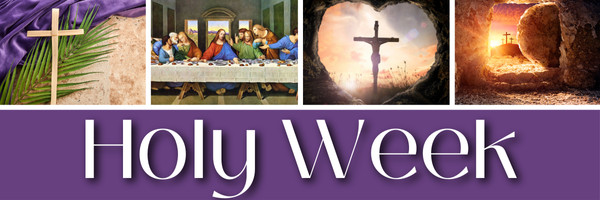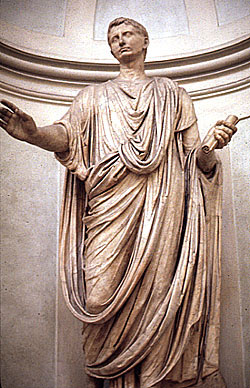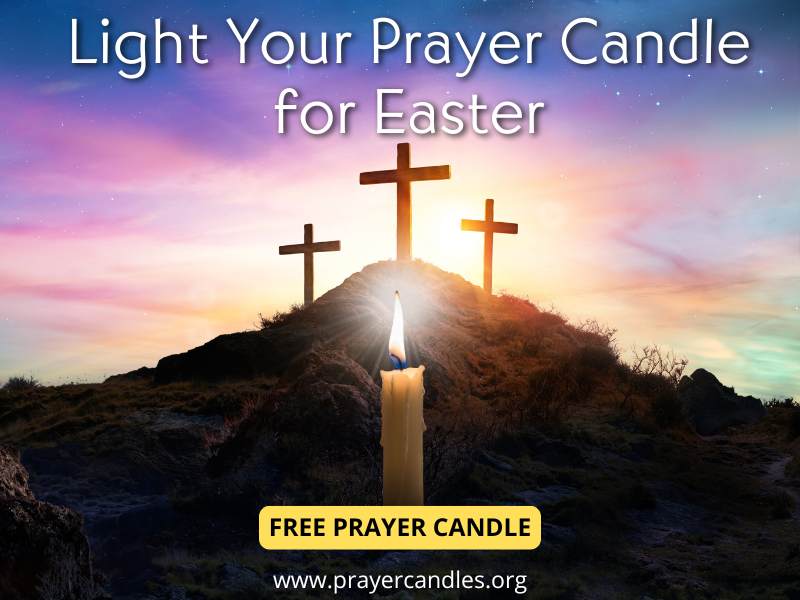Why We Proclaim the Transfiguration of the Lord on the Second Sunday of Lent
As we reflect on the Transfiguration of Jesus on this Second Sunday of Lent, let us enter more deeply into the mystery it opens by choosing to live differently. Let us draw encouragement from the account of the Transfiguration of Jesus Christ. Let us respond to the invitations of grace in our daily lives in order to grow more fully into the Image and likeness of Jesus Christ our Savior and Lord revealing His Transfigured glory to a world waiting to be born anew. Our Lenten observance is an invitation into an ongoing transformation in Jesus Christ which begins in time and opens up into eternity. It is not meant to be drudgery but opportunity, for those with eyes to see Jesus on that mountain. Wherever we are on the journey, it is good for us to be here.

Highlights
Catholic Online (https://www.catholic.org)
3/13/2017 (8 years ago)
Published in Lent / Easter
Keywords: Lent, forty days, Thransfiguration, glory, Mount Tabor, asceticism, penance, fasting, prayer, almsgiving, Second Sunday of Lent, Deacon Keith Fournier
CHESAPEAKE, VA (Catholic Online) - It is amazing how quickly life seems to fly by as you grow older. We all remember experiencing the opposite as children. Days seemed so long, especially if we were waiting for something special. Yet, as we move closer to death, which is the birth to eternal life, it is almost like running downhill. Life seems to accelerate.
As a Catholic Deacon, there is a liturgical experience I have of this reality as I age. It is so engrained in the pattern of my life that the liturgical cycle now serves as road posts on my journey through life. It is hard to believe that we are already at the Second Sunday of Lent!
On this Sunday I proclaim the Gospel text of the Transfiguration of the Lord for the faithful at Mass. In the Liturgical cycle we use the Gospel of Matthew during Year A:
Jesus took Peter, James, and John his brother, and led them up a high mountain by themselves. And he was transfigured before them; his face shone like the sun and his clothes became white as light. And behold, Moses and Elijah appeared to them, conversing with him.
Then Peter said to Jesus in reply, "Lord, it is good that we are here. If you wish, I will make three tents here, one for you, one for Moses, and one for Elijah." While he was still speaking, behold, a bright cloud cast a shadow over them, then from the cloud came a voice that said, "This is my beloved Son, with whom I am well pleased; listen to him."
When the disciples heard this, they fell prostrate and were very much afraid. But Jesus came and touched them, saying, "Rise, and do not be afraid." And when the disciples raised their eyes, they saw no one else but Jesus alone. (Mt 17:1-9)
Over the years I have served as a Deacon I have had people ask me "Why, on the second Sunday of Lent does the Church offer us an account of the Transfiguration?" I asked it myself many years ago when I began to ask such questions. I have never stopped asking questions. The beauty of Catholic Christian faith is that the answers get more meaningful the deeper into the mystery one goes.
The inclusion of this account is an ancient liturgical practice in the Church. Whether during Lent or on its own Feast in the Church Year, the Gospel account of the Transfiguration is meant to focus each one of us us on the meaning and end or purpose of the Christian life.
We will all be transfigured, as the Lord Himself was transfigured, when our redemption is complete in the Resurrection of the Body. Then, we will live, in the new heaven and new earth, in the fullness of the Communion of Love. We profess this every Sunday in the Ancient Creed. It is meant to become real for us, and affect the way we live our lives.
It can also help us to understand one of the purposes behind our voluntary embrace of ascetical practices during these forty days.We are cleaning our house.
In the Eastern Christian Churches, Orthodox and Catholic, the First Week of the Great Lent is called Clean Week. The focus of the week is to enter fully the Lenten practices of prayer, fasting and alms-giving with fervor - to set the pace for the forty days by running the first lap with vigorous effort. Strict fasting is encouraged, along with frequent prayer and alms-giving.
The intensity of the first week is intended to assist the believer in cultivating the proper disposition needed to achieve the desired end of the whole forty days of Lent, ongoing conversion of life reflected in a new way of living.
Our freedom was fractured by sin. We no longer always choose the good and the true. The only way our fractured freedom can be healed is through the application of the Splint of the Cross.
The call goes out every Lent to clean house, to be rid of all sin and entanglements which hold us back from reclaiming the freedom the Lord desires for each one of us.
In many Orthodox and Eastern Catholic communities the actual houses of believers are cleaned and stripped of excess, a symbol of the interior dynamic of the week and the very essence of Lent.
During the forty days of Lent we are all called to enter into a holy struggle against our disordered passions and weaknesses so that we can become more fitting vessels for the very life and light of God to dwell within, making us new.
Eastern Christians have retained some of the more austere practices and customs which were a part of the ancient practices of the early Church.
The Lenten practices we engage in are meant to focus us on the effect of our disordered passions and appetites and expose the division within us - and around us. This separation and disorder is the result of sin and its lingering effects.
The Church as mother and teacher invites us into a spiritual battle to strengthen us for the journey ahead. To equip us for the and struggle of faithfully living the Christian life as real disciples.
The Forty Days is about turning away from sin. However, it is also about turning toward the Lord. When both aspects are embraced, we can begin to experience the transformation of our integrated human person, our own transfiguration. It will only be complete in the Resurrection of our Bodies.
However, it begins right now.
It is not accidental that the Gospel of the First Sunday of Lent was the Temptation of Jesus in the Desert (Mt. 4:1-11) and the Gospel of the Second is the Transfiguration on the mountain. They are connected. He shows us the way to overcome the world, the flesh and the devil in that desert. He opens the portal of eternity and calls us into the very glory which He has with the Father on Tabor.
An ancient homily reminds us:
Just as the body of the Lord was glorified on the mountain when it was transfigured in the glory of God and in infinite light, so the bodies of the saints will be glorified and shine like lightning. "The glory which you have given me I have given to them" (John 17:22).
As countless candles are lighted from a single flame, so the bodies of all Christ's members will be what Christ is. Our human nature is transformed into the fullness of God; it becomes wholly fire and light" (Pseudo-Macarius, 15th homily)
From the earliest centuries, the Christian Church has emphasized the centrality of the Transfiguration of the Lord because it gives us an eternal perspective; opening up for us a deeper insight into the plan of God for the whole human race.
Our experience of our life in the Lord now is only the beginning of what is to come in the kingdom. The Church, in the words of the Fathers of the Second Vatican Council, is a seed of the kingdom to come. Our life within the Church is already a participation in the eternal realities of the life to come in a new heaven and a new earth.
Our second reading from St Paul's letter to Timothy reminds us to "Bear your share of hardship for the gospel." (2 Tim. 1) Lent is reflective of life. There are hardships ahead for those who seek to follow Jesus Christ.
One of the promises of the Bible is persecution. In his second letter to Timothy, Paul expressed this quite bluntly, Indeed all who desire to live a godly life in Christ Jesus will be persecuted (2 Tim. 3:12).
The Lord knew what was ahead for Peter, James and John. He wanted to get them ready by giving them an experience of the end to which they were called, with Him. This event on the Mountain was meant to strengthen the faith of these three disciples.
They were about to witness events that would lead their Lord and Master along what would appear to be an ignominious path, up Golgotha´s lonely hill, to be crucified, a fate reserved for common criminals. Their own faith would be shaken, tested and tried.
These three would be with him in the Garden of Gethsemane (Mt. 26:36 ff) He loved those who were His own in this world (John 13:1). And, as many beautiful writings in the Sacred Tradition remind us, the Lord wanted to encourage them - and to encourage us - on that Mountain of Transfiguration. Tabor and Calvary are connected.
This One who came from eternity, and took upon Himself the limitations of time, opened the portal of eternity which would never again be closed to those with eyes to see. He revealed to Peter, James and John the eternal now of His own glory.
However, He was doing more than encouraging them.
He was showing them who He was - and who they would become - in Him. He was revealing to them what had already begun; and giving them a vision that would forever change the way they viewed themselves, their daily lives and their mission in the world, after He would return to the Father.
As they learned to live their lives no longer for themselves but for Him they also began to undergo their own trials and walk the way to their own transfiguration by following Him up Golgotha's Hill. This is the path of all who bear His name Christian and carry forward in time the redemptive mission of Jesus as members of His Body.
We entered through the waters of the womb of Holy Baptism into the life of the Church - which is His Body. We are now in process, works in progress, being transformed as we cooperate with grace. We are being re-created and transfigured in Him.
He brought heaven to earth and earth to heaven, through the Paschal mystery. We now live in Him, bridging them both.
On that Mountain, Jesus revealed before mortal eyes the Transcendent Truth of who He is - and who Peter, James and John - and each one of us - will become in Him. They were invited to exercise their freedom and embrace the path that He had prepared for them.
He grounded them in the eternal Truth, and opened up for the countless millions who would hear this story from their faithful witness a glimpse of the Glory that is to come as we also choose Him in our daily lives.
Peter would later write of this experience:
His divine power has bestowed on us everything that makes for life and devotion, through the knowledge of him who called us by his own glory and power. Through these, he has bestowed on us the precious and very great promises, so that through them you may come to share in the divine nature, after escaping from the corruption that is in the world because of evil desire.
For this very reason, make every effort to supplement your faith with virtue, virtue with knowledge, knowledge with self-control, self-control with endurance, endurance with devotion, devotion with mutual affection, mutual affection with love.
We did not follow cleverly devised myths when we made known to you the power and coming of our Lord Jesus Christ, but we had been eyewitnesses of his majesty. For he received honor and glory from God the Father when that unique declaration came to him from the majestic glory, "This is my Son, my beloved, with whom I am well pleased." We ourselves heard this voice come from heaven while we were with him on the holy mountain. (2 Peter 1)
Every Christian is called to this participation in the Divine Nature. (2 Peter 1:4) In fact, it begins right now for those who have eyes to see the work of the Holy Spirit.
We are being transfigured in Christ as we cooperate with God's grace and live our lives now in Jesus Christ. This transfiguration will be complete when our entire person, including our body, is fully redeemed and transformed. The effects of the transfiguration involve the entire created order as well.
It will finally be reconstituted in Jesus Christ and handed back to the Father. The followers of Jesus, the Transfigured One, walk in His Way and are being transformed into His likeness, to shine as lights in a world steeped in darkness. We walk through the desert, enlightened by Tabor, up the mountain of Calvary and through the portal of the empty tomb to life eternal.
The Beloved Disciple John used this event of the Transfiguration as a hermeneutic, a lens through which he gave the early Christians a deeper insight into their difficulties, struggles and mission in the context of our progressive transformation.
In his first Letter to the early Churches, he encouraged them to persevere and live differently by referring to the event that occurred on that Mountain. He encouraged them to not be surprised or discouraged that the world did not recognize them, but rather to persevere in love through holding the vision of a transfigured life before them:
See what love the Father has bestowed on us that we may be called the children of God. Yet so we are. The reason the world does not know us is that it did not know him. Beloved, we are God's children now; what we shall be has not yet been revealed. We do know that when it is revealed we shall be like him, for we shall see him as he is. Everyone who has this hope based on him makes himself pure, as he is pure. (1 John 3)
The Lord Jesus has shown us the way up the mountain. He has invited us into a new way of living in Him through living within the communion of the Church. Living in that Church we are invited to go into the world and invite all men and women, through the waters of the womb of Baptism, into the new communion of love, where they can begin the process of conversion and transfiguration.
Born again, we are all invited to join with Peter, James and John and cry out with them "It is good for us to be here."
As we reflect on the Transfiguration of Jesus on this Second Sunday of Lent, let us enter more deeply into the mystery it opens by choosing to live differently. Let us draw encouragement from the account of the Transfiguration of Jesus Christ.
Let us respond to the invitations of grace in our daily lives in order to grow more fully into the Image and likeness of Jesus Christ our Savior and Lord revealing His Transfigured glory to a world waiting to be born anew.
Our Lenten observance is an invitation into an ongoing transformation in Jesus Christ which begins in time and opens up into eternity. It is not meant to be drudgery but opportunity, for those with eyes to see Jesus on that mountain. Wherever we are on the journey, it is good for us to be here.
---
'Help Give every Student and Teacher FREE resources for a world-class Moral Catholic Education'
Copyright 2021 - Distributed by Catholic Online
Join the Movement
When you sign up below, you don't just join an email list - you're joining an entire movement for Free world class Catholic education.

-

- Stations of the Cross
- Easter / Lent
- 5 Lenten Prayers
- Ash Wednesday
- Living Lent
- 7 Morning Prayers
- Mysteries of the Rosary
- Litany of the Bl. Virgin Mary
- Popular Saints
- Popular Prayers
- Female Saints
- Saint Feast Days by Month
- Pray the Rosary
The Way of the Cross: A Good Friday Reflection on Christ’s Final Journey
The Many Reasons Why We Call it Good Friday
“It Is Finished”: The Silence of Good Friday and the Triumph of the Cross
Daily Catholic
 Daily Readings for Saturday, April 19, 2025
Daily Readings for Saturday, April 19, 2025 St. Alphege: Saint of the Day for Saturday, April 19, 2025
St. Alphege: Saint of the Day for Saturday, April 19, 2025 Stewardship Prayer: Prayer of the Day for Saturday, April 19, 2025
Stewardship Prayer: Prayer of the Day for Saturday, April 19, 2025 Daily Readings for Friday, April 18, 2025
Daily Readings for Friday, April 18, 2025 St. Apollonius the Apologist: Saint of the Day for Friday, April 18, 2025
St. Apollonius the Apologist: Saint of the Day for Friday, April 18, 2025- Aspiration: Prayer of the Day for Friday, April 18, 2025
![]()
Copyright 2025 Catholic Online. All materials contained on this site, whether written, audible or visual are the exclusive property of Catholic Online and are protected under U.S. and International copyright laws, © Copyright 2025 Catholic Online. Any unauthorized use, without prior written consent of Catholic Online is strictly forbidden and prohibited.
Catholic Online is a Project of Your Catholic Voice Foundation, a Not-for-Profit Corporation. Your Catholic Voice Foundation has been granted a recognition of tax exemption under Section 501(c)(3) of the Internal Revenue Code. Federal Tax Identification Number: 81-0596847. Your gift is tax-deductible as allowed by law.








 Daily Readings for Saturday, April 19, 2025
Daily Readings for Saturday, April 19, 2025 St. Alphege: Saint of the Day for Saturday, April 19, 2025
St. Alphege: Saint of the Day for Saturday, April 19, 2025 Stewardship Prayer: Prayer of the Day for Saturday, April 19, 2025
Stewardship Prayer: Prayer of the Day for Saturday, April 19, 2025 St. Apollonius the Apologist: Saint of the Day for Friday, April 18, 2025
St. Apollonius the Apologist: Saint of the Day for Friday, April 18, 2025

